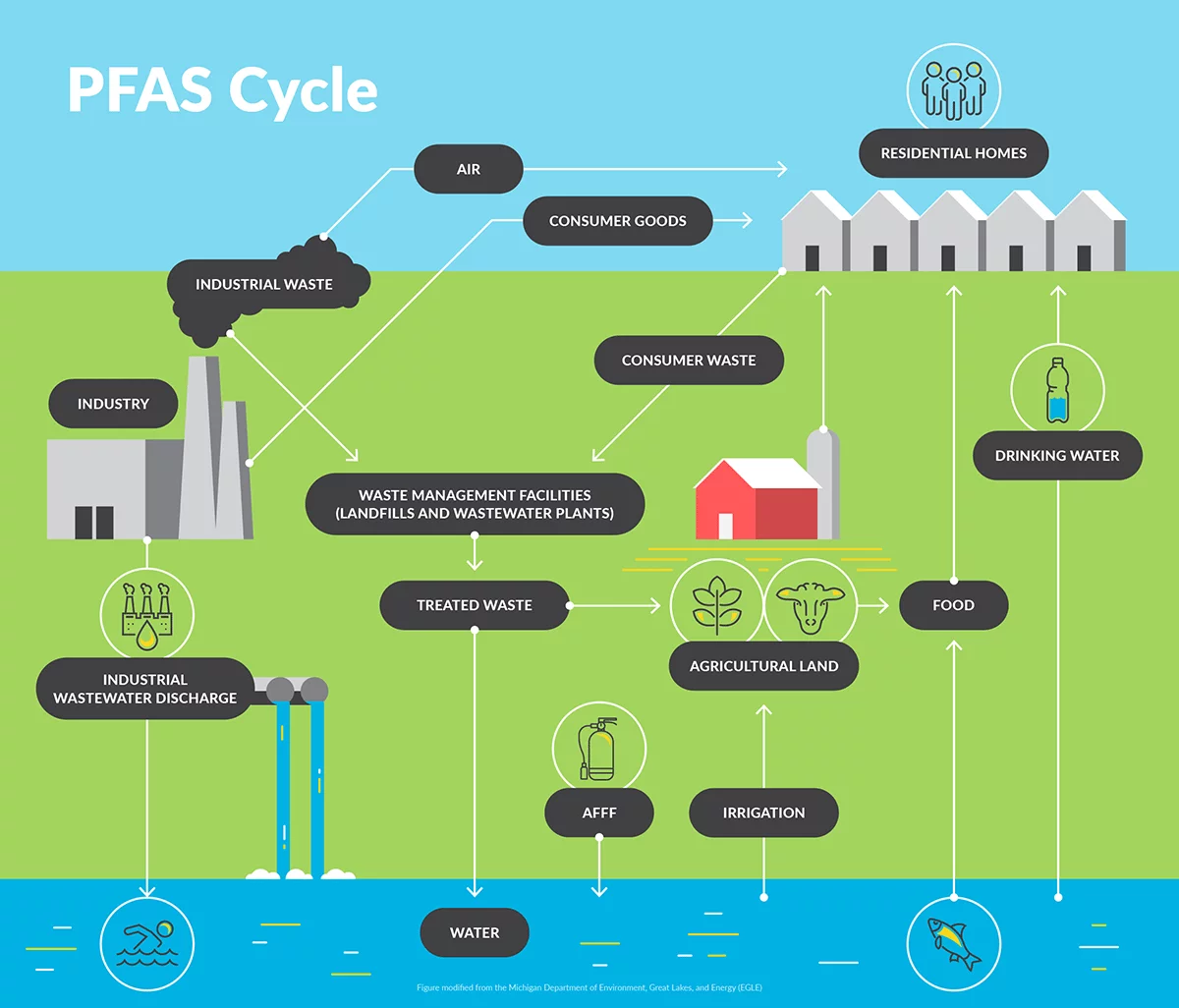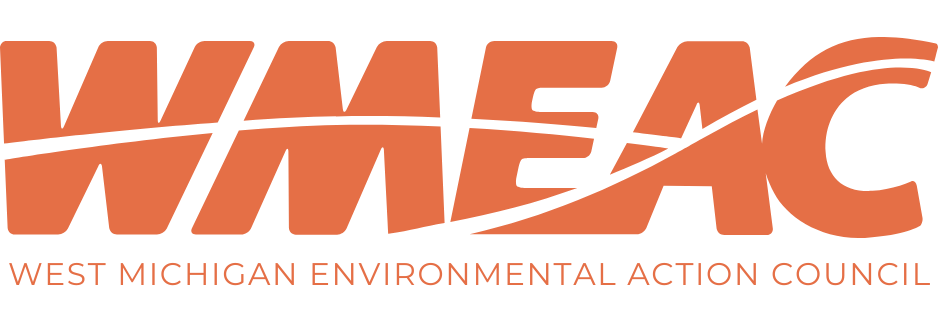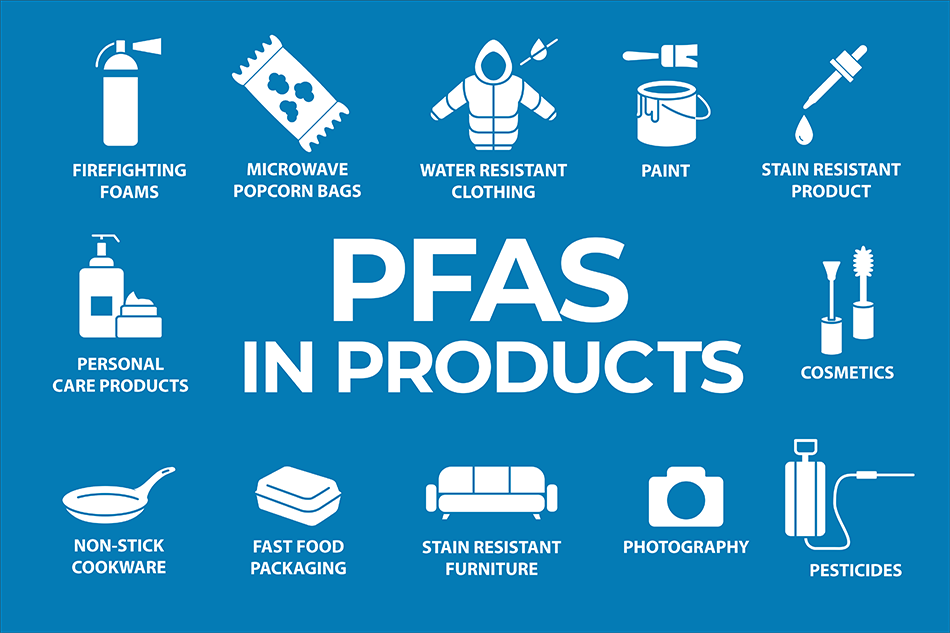By Lydia Denning, WMEAC Wolverine Community Advisory Group (CAG) Intern
The kitchen is a Grandma’s factory, churning out industrial levels of gingersnaps, chicken pot pies, casseroles, and cookies. It produces whatever your matriarch deems as suitable fuel to face life’s daily challenges, with a generous pinch of love sprinkled in. However, high levels of contact with PFAS, a lurking chemical found in everyday items, can pose a serious health risk to those exposed. Here’s what she needs to know to navigate this new-age hazard and keep her and her loved ones safe.
I spoke to Gail Feeback, a grandmother of three, to better understand the level of awareness and concern grandmothers might have regarding PFAS. Feeback became aware of PFAS around 2017 when the contamination of Rockford’s water by the Wolverine World Wide Tannery came to light. This local water crisis made PFAS an explicit community concern and is often the basis of West Michiganders’ understanding of PFAS.
PFAS stands for per- and polyfluoroalkyl substances, strong carbon-fluorine bonds developed by humans in the 1940s. Today there are thousands of variations of these chemicals, which bioaccumulate in our ecosystems and bodies. They do not break down easily and are hard to get rid of. There is emerging information that some PFAS can impact our health, potentially causing higher cholesterol levels, pregnancy complications, and kidney and testicular cancer, among other conditions (https://www.atsdr.cdc.gov/pfas/health-effects/index.html). This, paired with a lack of federal standards, leaves communities on their own to field the products, water, and food they consume. Rockford serves as a prime example of the potential harm PFAS carries, yet it’s important to understand that dangers are not limited to Rockford’s borders. As of June 2020, the Michigan PFAS Action Response Team has confirmed 93 PFAS sites with groundwater contamination in Michigan, the highest number of any state.

Typically thought to be found in drinking water, groundwater, and firefighting foam, PFAS proliferation is far more widespread than generally considered. Products that resist grease, water, and oil are typically coated with PFAS chemicals. Think of your non-stick pots, pans, utensils, plastic sandwich bags, pizza boxes, microwave popcorn bags, household cleaners, waterproof clothing, and even cosmetic products. PFAS quite literally surrounds the things we eat, drink, and wear.
Grandma Feeback has personal experience with PFAS, as her daughter’s household water tested positive for high levels of the chemicals. After discovering high levels of PFAS contamination, the next step is to get a certified filter for your drinking water. Further information regarding the specifics of these filters and answers to Frequently Asked Questions can be found at https://www.michigan.gov/pfasresponse.
In order to mitigate your exposure to PFAS, consider switching out some of your daily products for PFAS-free alternatives. Wooden cooking utensils, cast-iron pots and pans, countertop popcorn poppers, Bee’s Wrap, natural cleaning products, and Environmental Work Group (EWG) Verified cosmetics are better options. While some differences may seem small, every drop in the bucket toward reducing contamination works to clean our system and drinking water.
Understanding the risks of PFAS and how to mitigate exposure demonstrates to policymakers and producers that consumers care about their health and believe everyone should have access to clean and safe drinking water, food, and products. This understanding allows communities to protect and advocate for themselves and their ecosystems, leading to a brighter, healthier, and greener future for generations to come.


